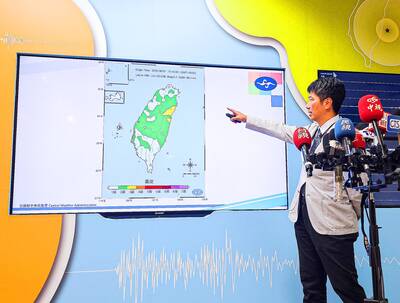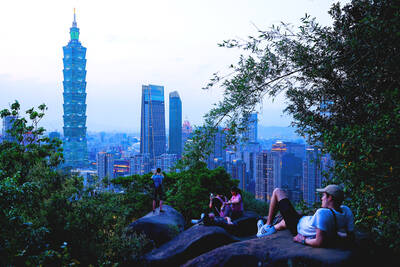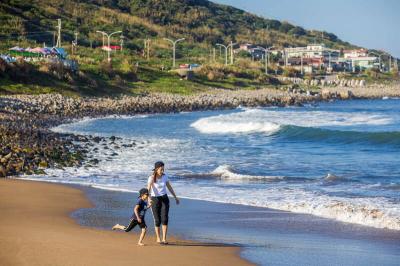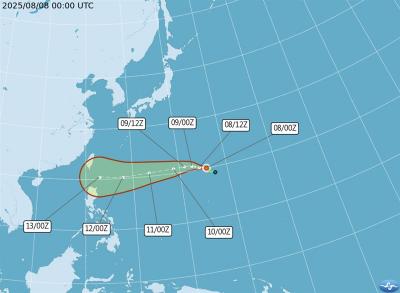The Academia Sinica has discovered a safer and more efficient method of producing Tamiphosphor, a drug candidate used to combat influenza, including both bird flu and the common flu, it announced yesterday.
The method can also be applied in manufacturing Tamiflu, the most common drug on the market used to treat the disease, said Fang Jim-min (方俊民), a research fellow at the academy’s Genomics Research Center.
The breakthrough was published yesterday as a “hot paper” in Angewandte Chemie, a highly influential journal in the field of chemistry.
“Although the manufacturing procedure [by Roche pharmaceutical company] for Tamiflu is relatively effective, the process has two shortcomings,” Fang said.
First, Tamiflu manufacturing requires shikimic acid, which is extracted from star anise, a natural herb.
“However, the purity of shikimic acid is difficult to attain in large quantities,” he said.
Second, potentially explosive azide reagents and intermediates are used during production, which gives the process an element of precariousness and danger, Fang said.
The center has been working on an alternative method to develop a better drug in a safer way since 2005, Fang said.
In September it announced the development of Tamiphosphor, which in lab mice proved to be more effective than Tamiflu, said Shie Jiun-jie (謝俊結), another researcher at the center.
“While Tamiflu and Tamiphosphor inhibit the activity of neuraminidase, an enzyme that is essential in the replication process of influenza viruses H5N1 and H1N1, Tamiphosphor was found to be more effective in enzyme inhibition and yielded higher survival and recovery rates in infected mice,” Shie said.
However, at the time Tamiphosphor’s 45-day, 19-step manufacturing process made it far from being commercially viable, Shie said.
Working to shorten the production lead time, the team employed an innovative “retrosynthetic method,” Shie said.
“After analyzing the compound structures of both Tamiflu and Tamiphosphor, we backtracked step by step to find the string of precursor compounds and eventually deduced a number of starting compounds that would eventually yield the drugs,” Shie said.
Several compounds were identified, Shie said, adding: “Taking cost into consideration, we chose bromobenzene, a common and inexpensive chemical, as our raw material.”
Using bromobenzene, chemical functional groups are added step by step; in the end, the bromine atom is either converted into carboxyl to make Tamiflu, or phosphonate to make Tamiphosphor, he said.
“Not only has the production process been cut to 11 steps and two weeks, the new method eliminates potentially explosive compounds and is much safer,” Shie said.
With a simpler and shorter production process, the manufacturing yield has doubled, boosting its commercial potential, Fang said.
Although it would take at least five to 10 years more for Tamiphospor to hit the market, “if it makes it that far,” Fang said that the team planned to continue with its research.
“We are already in talks with several pharmaceutical companies about the next steps for this drug candidate,” he said.

Aftershocks from a magnitude 6.2 earthquake that struck off Yilan County at 3:45pm yesterday could reach a magnitude of 5 to 5.5, the Central Weather Administration (CWA) said. Seismological Center technical officer Chiu Chun-ta (邱俊達) told a news conference that the epicenter of the temblor was more than 100km from Taiwan. Although predicted to measure between magnitude 5 and 5.5, the aftershocks would reach an intensity of 1 on Taiwan’s 7-tier scale, which gauges the actual effect of an earthquake, he said. The earthquake lasted longer in Taipei because the city is in a basin, he said. The quake’s epicenter was about 128.9km east-southeast

GENSLER SURVEY: ‘Economic infrastructure is not enough. A city needs to inspire pride, offer moments of joy and foster a sense of belonging,’ the company said Taipei was named the city with the “highest staying power” in the world by US-based design and architecture firm Gensler. The Taiwanese capital earned the top spot among 65 cities across six continents with 64 percent of Taipei respondents in a survey of 33,000 people saying they wanted to stay in the city. Rounding out the top five were Vietnam’s Ho Chi Minh City (61 percent), Singapore (59 percent), Sydney (58 percent) and Berlin (51 percent). Sixth to 10th place went to Monterrey, Mexico; Munich, Germany; Sao Paulo, Brazil; Vancouver; and Seoul. Cities in the US were ranked separately, with Minneapolis first at

The New Taipei City Government today warned about the often-overlooked dangers of playing in water, and recommended safe swimming destinations to cool off from the summer heat. The following locations in the city as safe and fun for those looking to enjoy the water: Chienshuiwan (淺水灣), Baishawan (白沙灣), Jhongjiao Bay (中角灣), Fulong Beach Resort (福隆海水浴場) and Sansia District’s (三峽) Dabao River (大豹溪), New Taipei City Tourism and Travel Department Director-General Yang Tsung-min (楊宗珉) said. Outdoor bodies of water have variables outside of human control, such as changing currents, differing elevations and environmental hazards, all of which can lead to accidents, Yang said. Sudden

Tropical Storm Podul has formed over waters north-northeast of Guam and is expected to approach the seas southeast of Taiwan next week, the Central Weather Administration (CWA) said today. The 11th Pacific storm of the year developed at 2am over waters about 2,660km east of Oluanpi (歐鑾鼻), Pingtung County — Taiwan's southernmost tip. It is projected to move westward and could have its most significant impact on Taiwan on Wednesday and Thursday next week, the CWA said. The agency did not rule out the possibility of issuing a sea warning at that time. According to the CWA's latest update, Podul is drifting west-northwest